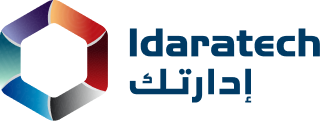In today’s working world, keeping track of time and attendance is crucial. Companies must be able to manage employee attendance in order to maintain correct payroll records, compute benefits, and comply with labor laws in light of the development of work-from-home policies.
However, keeping track of attendance is frequently a labor-intensive process for employers and employees. With conventional time and attendance systems, there has also been a significant increase in “buddy punching” and time theft. Because of this, more and more companies are using biometric clocking systems to check employee attendance and determine payments. Biometric devices provide highly accurate monitoring of employee presence, simplifying payroll computations.
But what precisely is a biometric clocking system, how does it work? The benefits of this system. By reading on, discover more about how biometric clocking systems work and how they may be used to monitor staff attendance and timekeeping.
How do Biometric Clocking Systems Work?

Employees can log in and out of their offices using a biometric clocking system that uses their fingerprints. Every employee has their fingerprints scanned, followed by a mapping process using different system coordinates.
These coordinates are then plotted against a graph by the system, and they are then saved.
Only then is the entry counted after mapping the employee’s finger’s coordinates and comparing them to the previous photograph.The fact that each fingerprint has unique coordinates that cannot be duplicated from another fingerprint makes it almost impossible to replicate a print, which is one of the most outstanding fingerprint features.
Benefits of Biometric Clocking Systems

1. Accuracy:
Correct and up-to-date information is crucial for transparent HR operations. Using a fingerprint-based time attendance system eliminates the possibility of human error when recording attendance. The benefit of the company maintaining labor rules and enabling it to take a clear stance on any legal actions is the proper tracking of employee attendance.
2. Lessen the Risk of Buddy Punching:
A biometric clocking system can help lower the risk of employee time theft and buddy punching by giving employers a trustworthy data source about their workforce. As a result, attendance will only be tracked if the employee shows up in person to the system.
3. Reduce Risk of Employee Misconduct:
In the event of organizational fraud, the system can quickly identify everyone present because they cannot commit fraud without being noticed by the biometric clocking systems.
4. No More Time Theft:
It is impossible to pretend to be present at the office because technology tracks who is there and how much time they spend working. It removes the chance of erroneous claims of presence or production. Additionally, it can generate payroll and management reports based on actual attendance. There is no better way to verify that employees are who they claim they are than to take a snapshot of them and compare it to the face or photo of that person that is on record. Never again be taken in by deceptive time entries.
5. Simple Authentication Across Several Locations:
Attendance tracking becomes more complicated when personnel are dispersed across several locations and time zones. Both on-site and remote work are possibilities. Utilizing biometric terminals, workers may clock in and out at any time and place, enabling remote authentication. Additionally, the onboarding of new employees is facilitated and secured via biometric authentication.
6. Seamless Shift Switching
Shift changes can be facilitated using fingerprint attendance tracking or biometric clocking systems without much manual labor. The high throughput and quick authentication requirements during shift changes can be handled with fingerprint sensors.
7. Time and Money:
The quick authentication offered by biometrics, especially for high-throughput authentication solutions, saves time in both scenarios since time is money. Employers who would otherwise have to manage attendance manually are protected by biometric technology. The total time employees work will be determined automatically using their clock-in and clock-out times. An employer can easily download the attendance report for a worker using a biometric attendance software.
8. Accurate Payroll Records:
You can preserve precise payroll records for your employees. You may maintain tabs on how many hours a particular employee has attempted to work. This helps you in making wise choices regarding your staff members at work. Employers can administer the system more successfully by keeping correct payroll records using biometrics.
How Do Biometric Clocking Systems Prevent Employee Time Theft?

There are several ways that employees steal time. First, adding a few minutes before or after each shift is simple for an employee to use paper time cards. (I came, but my manager doesn’t know the precise time.) This time adds up. Therefore, even a small company may suffer a weekly loss of up to four hours per employee.
Employees also steal time by “buddy punching” or “buddy clocking,” which is perhaps more detrimental. In this situation, an employee clocks in for another who isn’t at work. In some circumstances, the employee eventually arrives.
Nevertheless, there are many instances of employees receiving payment for the entire missed shifts. The plan assures that the missing employee’s pay is not withheld and that they do not receive a tardy or absence. In the United States, buddy-clocking fraud costs businesses around $373 million annually. The annual costs to their companies of blatant abusers can reach thousands of dollars.
Conclusion
Your business can save time and money with the use of biometric clocking systems. The need for timekeepers or recordkeepers is reduced because employees can swiftly clock in and out. The additional advantage of biometric timepieces is their ability to identify habitual intruders who might not be abiding by regulations or standards. The fingerprint time attendance system is extensive and has a variety of uses. A corporation can gain from biometric technology in a number of ways. As a result of their impenetrability, nearly every MNC today employs them, and startups are likewise eager to implement biometric clocking systems.
With the specialized solutions that Idaratech HR offers, you can quickly improve the overall administration of your employees. The Idaratech HR’ Sensor fingerprint time attendance tracker system is easy to use and doesn’t require any software to function. Reports may be downloaded from the device through USB.
FAQ’s
Question 1: What are biometric clocking systems?
Biometric clocking systems are sophisticated time and attendance management systems that use people’s distinctive physiological or behavioral traits, such as fingerprints, facial features, speech patterns, or even retinal scans, to record employee work hours and attendance precisely.
Question 2: Which biometric features can be applied to clocking systems?
You can employ a variety of biometric characteristics, including palm prints, iris scans, voice recognition, facial recognition, and various biometric attributes like fingerprints. The selection of a biometric feature is based on details like accuracy, user ease, and the company’s unique needs.
Question 3: Is it simple to set up biometric clocking systems?
The difficulty of implementing biometric clocking systems varies depending on the size of the business, the number of employees, and the selected biometric technology. However, technological advances have made the deployment process somewhat smoother compared to prior years.
Question 5: What challenges can enterprises face while deploying biometric clocking systems?
Organizations may encounter difficulties with relation to startup costs, employee adoption of the technology, implementation-related technical issues, and possibly moral and legal dilemmas involving the gathering and storage of biometric data.
Question 6: Can biometric clocking systems be utilized for employees who work remotely or off-site?
Specific biometric timing systems include remote clocking alternatives through mobile applications or other secure methods, allowing off-site or remote personnel to record their work hours precisely.

